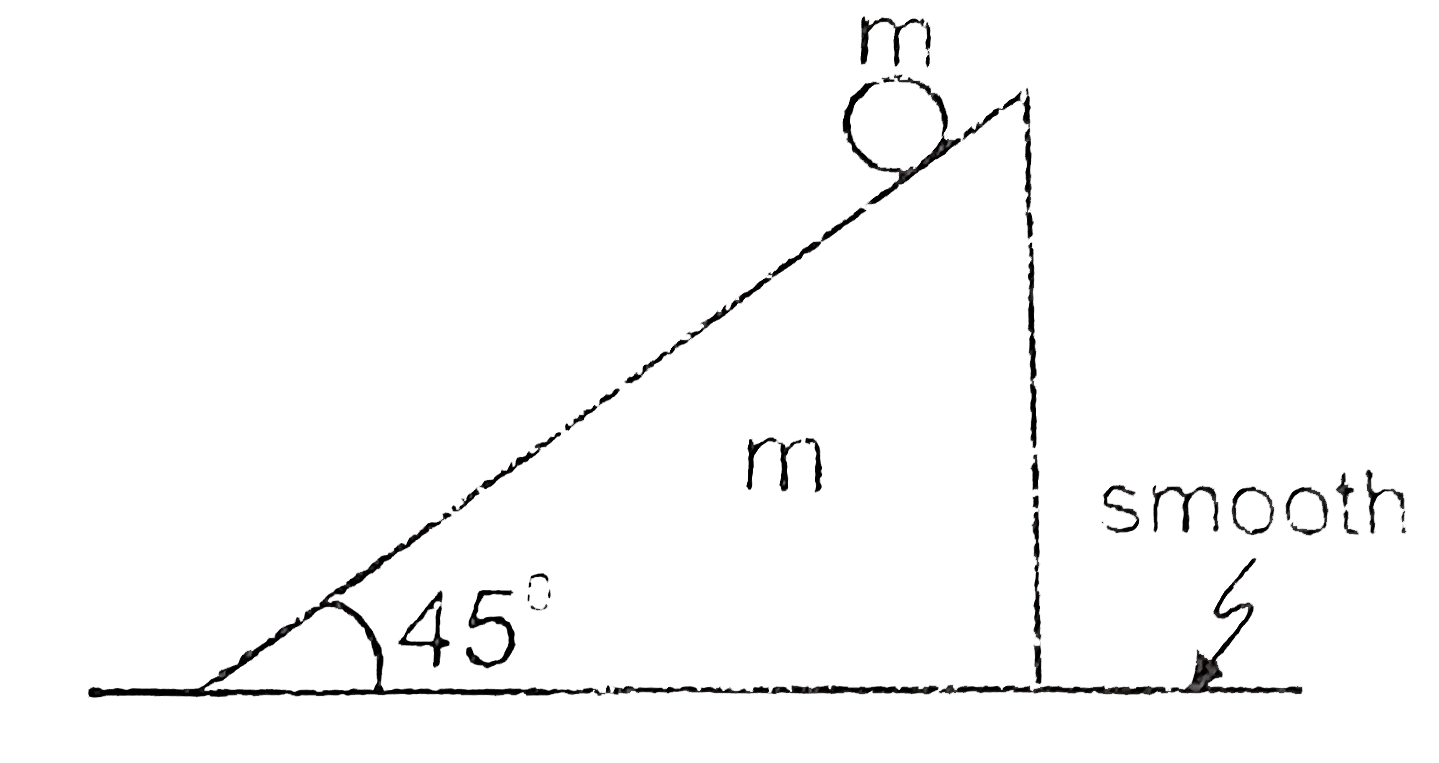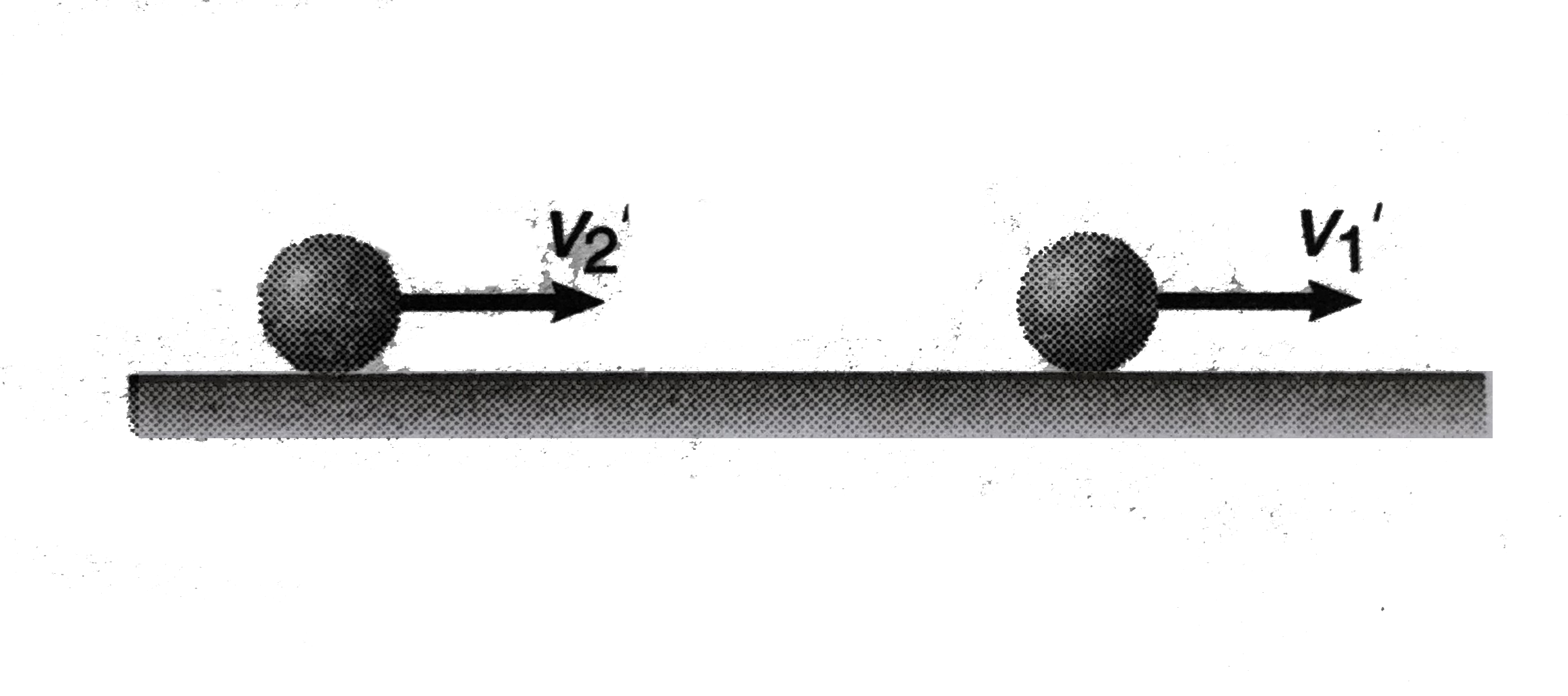A ball hits a floor and rebounds after an inelastic collision. In this case
the momentum of the ball just after the collision is same as that just before the collision
the mechanical energy of the ball remains the same during the collision
the total momentum of the ball and the earth is conserved
the total energy of theball and the earth remains the same
The correct Answer is:C, D
To solve the question regarding the collision of a ball with the floor, we will analyze each option provided and determine which statements are true or false based on the principles of physics, particularly focusing on momentum and energy conservation during inelastic collisions.
1. Understanding Inelastic Collision:
- In an inelastic collision, the colliding objects do not bounce off each other perfectly. Some kinetic energy is transformed into other forms of energy (like heat or sound), and the objects may stick together or deform.
- Therefore, the ball will not have the same velocity after the collision as it had before.
Hint: Remember that inelastic collisions result in a loss of kinetic energy.
2. Analyzing Option 1:
- The momentum of the ball just after the collision is not the same as just before the collision.
- Since the ball loses some kinetic energy and velocity, its momentum decreases.
Hint: Consider the formula for momentum (p = mv) and how velocity changes in inelastic collisions.
3. Analyzing Option 2:
- The mechanical energy of the ball does not remain the same during the collision.
- Mechanical energy is converted to other forms during the collision, so it decreases.
Hint: Recall that mechanical energy is the sum of kinetic and potential energy, and inelastic collisions convert some of this energy.
4. Analyzing Option 3:
- The total momentum of the ball and the Earth is conserved.
- Since there are no external forces acting on the ball-Earth system, the momentum before and after the collision remains constant.
Hint: Think about the conservation of momentum principle in closed systems.
5. Analyzing Option 4:
- The total energy of the ball and Earth system remains the same.
- Although mechanical energy is not conserved, the total energy (including all forms of energy) in the system is conserved.
Hint: Remember that energy can change forms but the total energy in a closed system remains constant.
Conclusion:
- Option 1: False (momentum changes)
- Option 2: False (mechanical energy changes)
- Option 3: True (momentum of the system is conserved)
- Option 4: True (total energy of the system is conserved)
Final Answer:
The correct statements are:
- The total momentum of the ball and Earth is conserved (Option 3).
- The total energy of the ball and Earth remains the same (Option 4).
- In an inelastic collision, the colliding objects do not bounce off each other perfectly. Some kinetic energy is transformed into other forms of energy (like heat or sound), and the objects may stick together or deform.
- Therefore, the ball will not have the same velocity after the collision as it had before.
- The momentum of the ball just after the collision is not the same as just before the collision.
- Since the ball loses some kinetic energy and velocity, its momentum decreases.
- The mechanical energy of the ball does not remain the same during the collision.
- Mechanical energy is converted to other forms during the collision, so it decreases.
- The total momentum of the ball and the Earth is conserved.
- Since there are no external forces acting on the ball-Earth system, the momentum before and after the collision remains constant.
- The total energy of the ball and Earth system remains the same.
- Although mechanical energy is not conserved, the total energy (including all forms of energy) in the system is conserved.
- Option 1: False (momentum changes)
- Option 2: False (mechanical energy changes)
- Option 3: True (momentum of the system is conserved)
- Option 4: True (total energy of the system is conserved)
The correct statements are:
- The total momentum of the ball and Earth is conserved (Option 3).
- The total energy of the ball and Earth remains the same (Option 4).
Topper's Solved these Questions
- CENTRE OF MASS, LINEAR MOMENTUM, COLLISIONBOOK - HC VERMA ENGLISHCHAPTER - CENTRE OF MASS, LINEAR MOMENTUM, COLLISIONEXERCISE - Question For short Answer
25 Videos
- CALORIMETRYBOOK - HC VERMA ENGLISHCHAPTER - CALORIMETRYEXERCISE - Short answer
9 Videos
- CIRCULAR MOTIONBOOK - HC VERMA ENGLISHCHAPTER - CIRCULAR MOTIONEXERCISE - Question for short Answer
10 Videos
Similar Questions
Knowledge Check
A ball his the floor and rebounds after inelastic collision. In this case
AThe momentum of the ball just after the collision is the same as that just before the collision.Bthe mechanical energy of the ball remains the same in the collisionCthe total momentum of the ball and the earth is conservedDthe total energy of the ball and earth is conserved
In inelastic collision,
View SolutionA ball is dropped from a height of 20 m in the floor and rebounds to 1.25 m after second collision, then coefficient of restitution e is
View SolutionAnwer carefully, with reasons:
a) In an elastic collision of two billiard balls, is the total kinetic energy conserved during the short time of collision of the balls (i.e. when they are in contact)?
Is the total linear momentum conserved during the short time of an elastic collision of two balls?
c) What are the answers to a) and b) for an inelastic collision?
d) If the potenital energy of two billiard balls depends only on the separation distance between their centers, is the collision elastic or inelastic? (note we are talking here of potential energy corresponding to the force during collision, not gravitational potential energy).
View SolutionA ball falls from a height such that it strikes the floor of lift at 10 m/s. If lift is moving in the upward direction with a velocity 1 m/s, then velocity with which the ball rebounds after elastic collision will be
View SolutionA ball of mass 'm is released from the top of a smooth movable wedge of mass 'm'. When the ball collides with the floor, velocity is 'v'. Then the maximum height attained by the ball after an elastic collision with the floor is : (Nelect any edge at the lower end of the wedge)

View SolutionWhat will be the angle of reflection in case of an inelastic collision and v=?
View SolutionA ball of mass m moving at a speed v makes a head on inelastic collision with an identical ball at rest. The kinetic energy of the balls after the collision is 34th of the original. Find the coefficient of restitution.


View Solution
